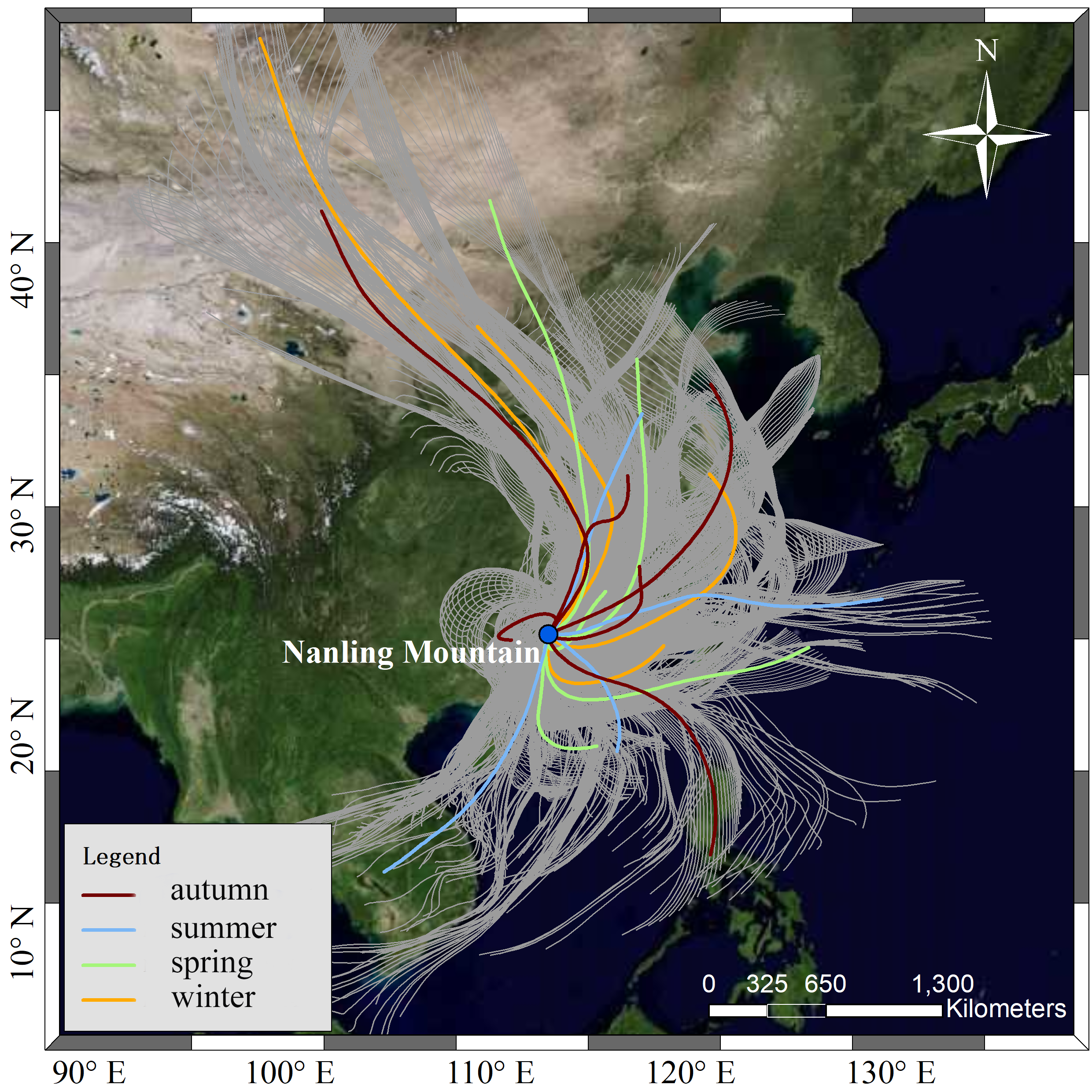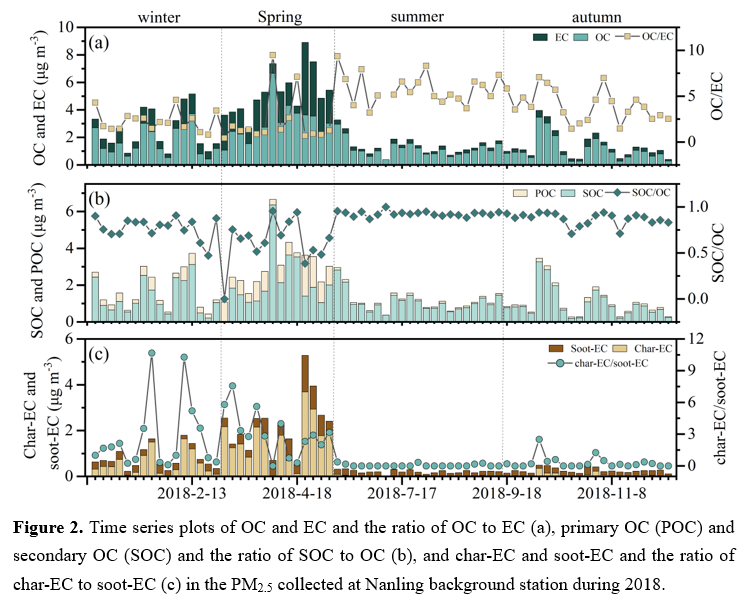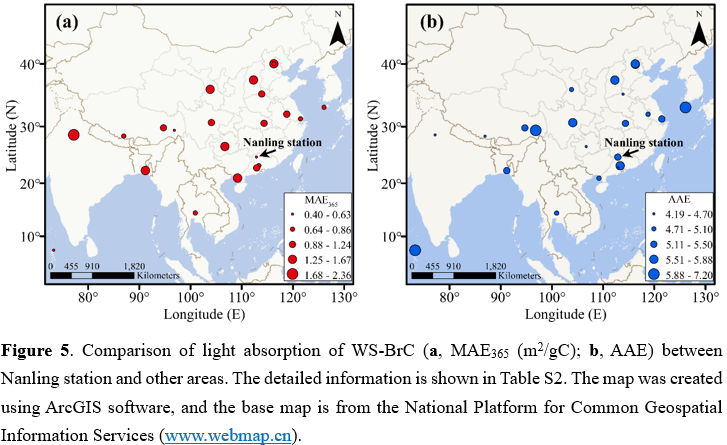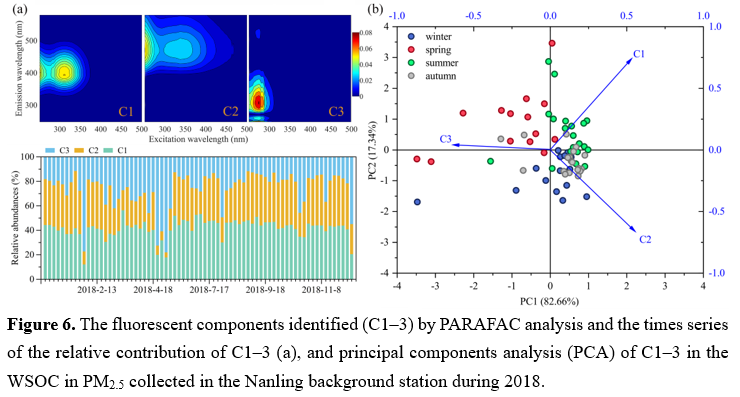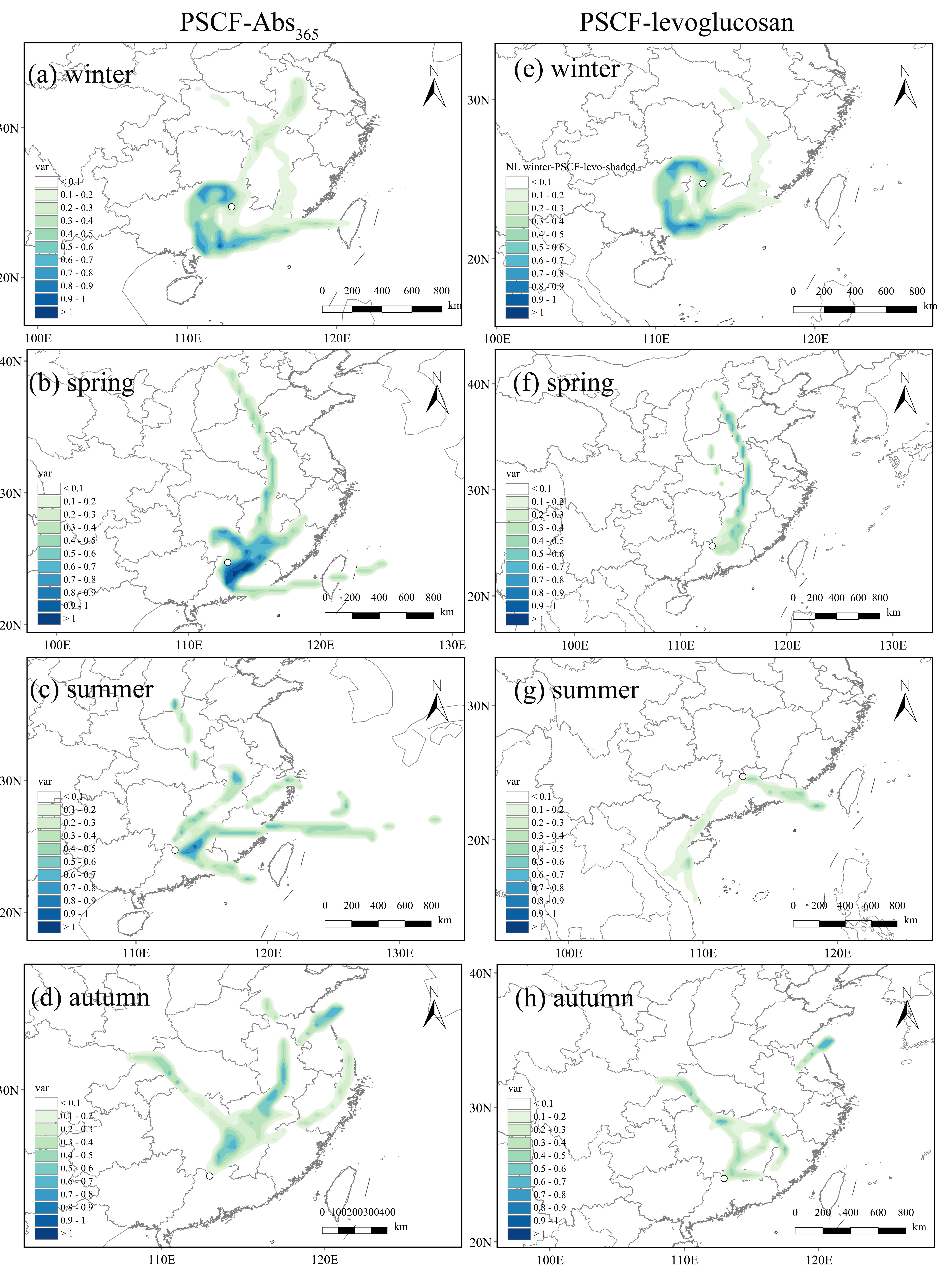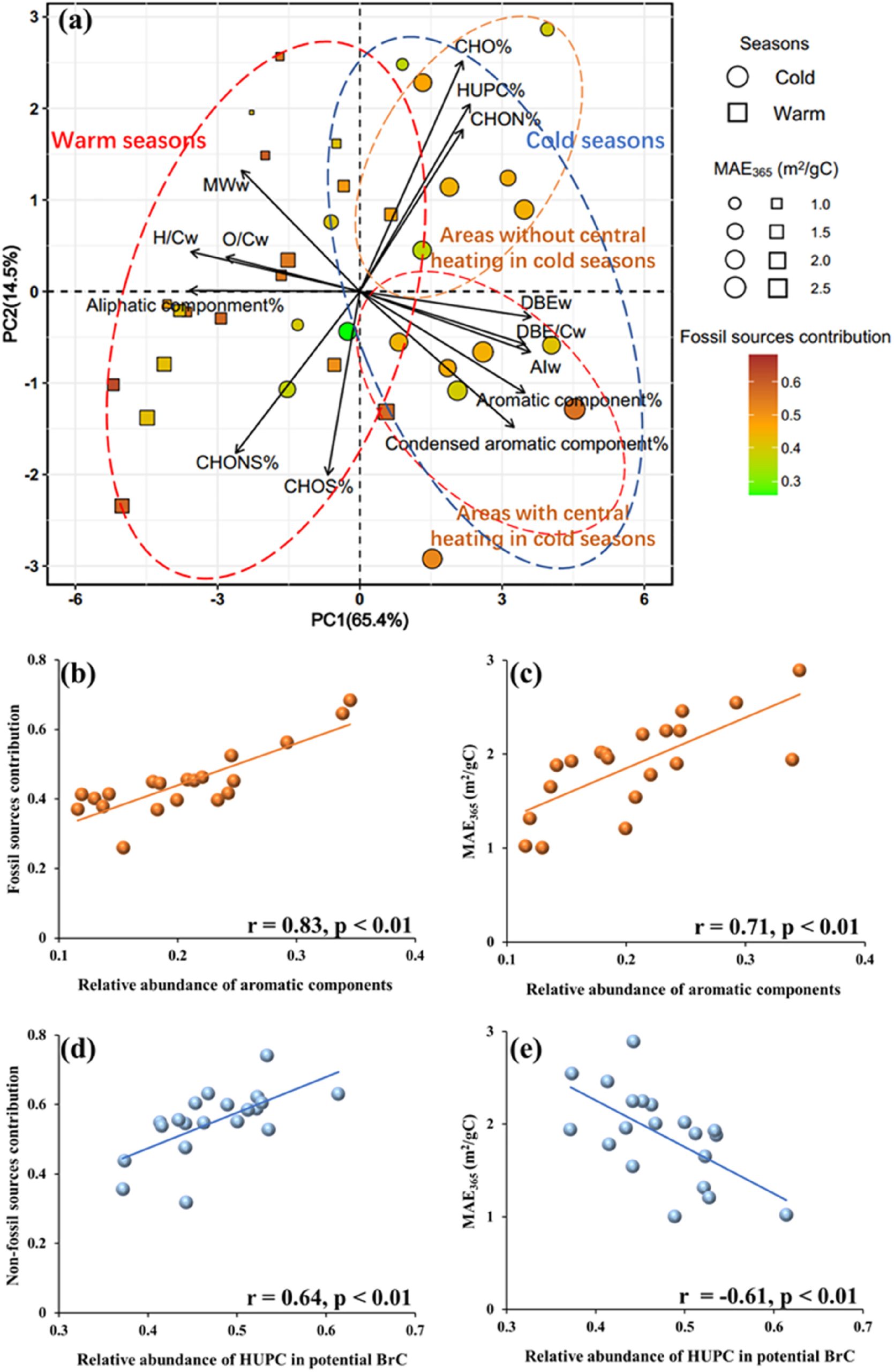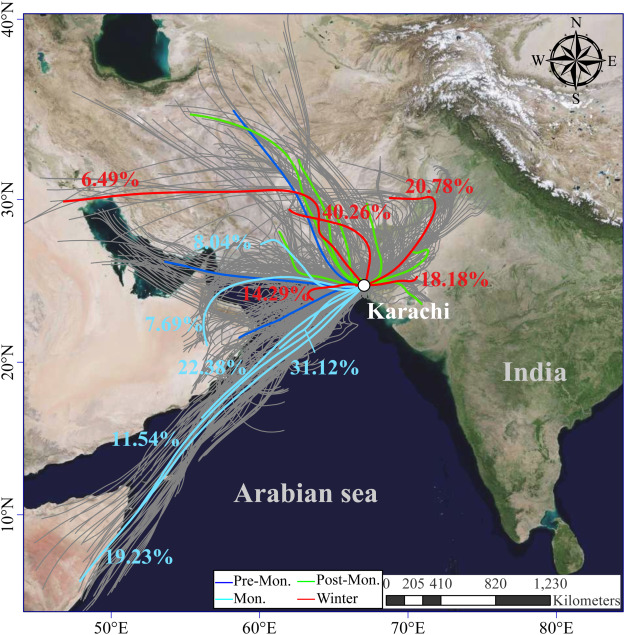Bolong & Tang Jiao’s manuscript ‘Seasonal Changes in Water-soluble Brown Carbon (BrC) at Nanling Background station in South China” has been approved for publication in Frontiers in Environmental Science, section Atmosphere and Climate. Congratulations!
分类目录归档:POM
Yangzhi publish in JGR-A
Yangzhi’s new paper ‘The Sources and Atmospheric Processes of Strong Light-Absorbing Components in Water Soluble Brown Carbon: Insights From a Multi-Proxy Study of PM2.5 in 10 Chinese Cities‘ was published recently in JGR-A. Congratulations!
Tang Jiao publishes in STOTEN
Tang Jiao’s new paper ‘Molecular signatures and formation mechanisms of water-soluble chromophores in particulate matter from Karachi in Pakistan‘ was recently published in STOTEN; and it was of Karachi, Pakistan! Congratulations!
- EEM-PARAFAC identified two humic-like and one phenolic-like component in Karachi.
- Humic-like components consist of molecules with higher aromatic and oxidative degrees.
- Humic-like component with a longer emission maximum largely contributes to WS-BrC.
- Oxidation processes are important pathways for the formation of humic-like components.

